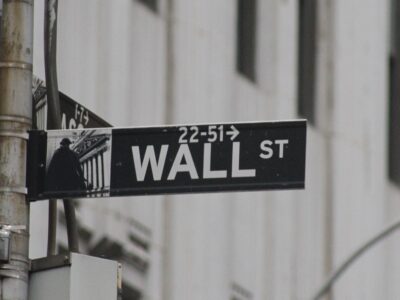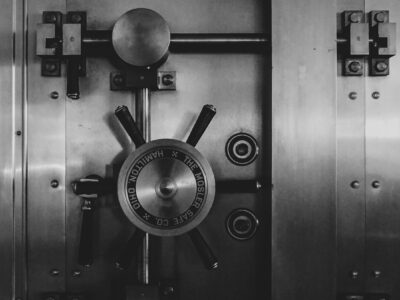Commentary – 2023 4th Quarter
10/13/2023

“The stock market has predicted nine out of the last five recessions.”
- MIT Professor Paul Samuelson in 1982
Many Threads to Follow
Historically, September is the worst month of the year for the stock market, with the S&P 500 averaging a 1.1% drop dating back to 1928. This past September lived up to that reputation, with the S&P 500 falling just over 4%.
But the stock market is not the economy, and for the moment, the economy is not in bad shape.
Yes, there are potential headwinds ahead, as well as indicators pointing in negative directions. For example, most of the excess savings people built up in the pandemic have dissipated, and the programs the government put in place to shore up people’s finances and the economy have largely dried up. The Federal Reserve has been raising interest rates for well over a year in an attempt to slow the economy down and combat inflation, and it’s not clear whether the full effects of that have been felt.
This quote from an article in Vox summed up the current situation perfectly[1]:
“It’s a hold-your-breath moment, because you’re just waiting,” said Claudia Sahm, former economist at the Federal Reserve. “That’s always the case, but now I think it’s even more reinforced. We’ve been in uncharted territory since 2020, and now it’s seeing if we can get out of it. You can make the case in every direction.”
In the short term, there are multiple small factors capturing headlines. The United Auto Workers strikes, the pending resumption of student debt payments, and the risk of a government shutdown.
The UAW strikes cost the economy $1.6 billion in their first week, according to an estimate by Michigan consulting firm Anderson Economic Group. Initially, the UAW struck at three plants in three states, now it’s escalated to 38 plants across 20 states. The longer the strikes go on, the worse the scenario will get.
Student loan repayments, put on pause during the pandemic, are set to become due again in October. Analysts at Goldman Sachs estimate that will cost American households approximately $70 billion each year. While this may sound impactful, the reality is that $200 or $300 to the government each month is not going to do the economy in.
There are other short-term negative factors in play as well. Oil prices have risen and, in turn, so has the cost of gas. Mortgage rates are spiking. Most, if not all, pandemic relief programs have sunsetted, including food stamps, Medicaid, and unemployment insurance. Congress allowed the expanded child tax credit to expire as well.
While these factors all do play a role, there are three macro-level conditions to pay attention to right now: Jobs, Inflation, and the Fed.
The red-hot labor market is cooling off a little, but it remains resilient. It’s the type of thing you’d want to see if the “soft landing” scenario, where the economy slows down without going into negative territory, is going to happen.
People are quitting their jobs at more normal rates, and job openings have fallen. Job gains have slowed as well. As of the August jobs report, the US was adding an average of 150,000 jobs per month over the past three months. By comparison, at the start of the year, the figure was more than double that.
This is all headed in the direction of “normal” territory. The question is whether normal sticks. The downward trend could continue into negative territory, meaning the labor market adds fewer and fewer jobs until we eventually see job losses.
Inflation increasing again is another concern, but first it needs to continue its descent. While the hope for the labor market is that it stays close to where it is, the hope for inflation, which is in the 3-4 percent range annually, continues to head more toward the 2 percent rate the Fed aims for in the long term.
What’s more, some of the factors that could contribute to increasing inflation, such as trade disruptions and rising oil prices, are very much out of the Fed’s hands. Political instability in China, the decoupling of China and the US, and the resulting new era of trade protectionism are re-shaping global demand.
Third quarter inflation readings remained relatively steady and economic measures continued to point to stronger-than-expected results, with the Fed’s “GDP Now” gauge showing a 4.9% annualized growth[2].
Both factors add to the Fed’s concern that the economy is not slowing as expected, pointing to higher interest rates for longer. In September, interest rates were left unchanged. It’s expected that rates will rise once more this year and that cuts will likely not be considered until late 2024.
The Inversion Coercion
It’s still not clear if we’ve seen the full fallout of the actions the Fed has already taken, but it does appear that investors are starting to believe the Federal Reserve. Long-term interest rates near multiyear peaks suggests the market is sanguine about the health of the U.S. economy. The dominant narrative among investors is that it has been able to absorb the Federal Reserve’s sharp hike in borrowing costs without cracking—the fabled “soft landing.”
However, for it to be true that the U.S. economy can avoid a contraction in coming quarters we must accept that the predictive recession message of a deeply inverted yield curve, where short-term Treasury yields are notably higher than 10-years, can now be dismissed by equity investors.
This was recently detailed in a MarketWatch article[3]:
Michael Darda, chief economist and market strategist at Roth MKM, has examined seven decades of the yield curve and how it relates to the business cycle and equity market performance. Using the spread between 10-year and 1-year bond yields he found there have been 12 inversions since the 1950’s.
Importantly, during these occasions the inversion was shown to have preceded the eventual recession by a wide range of between seven to 25 months, with an average lag of 14 months.
“A look back through the financial news pages shows that soft landing stories were common, and the yield curve signal was dismissed going into the 1990-1991, 2001, 2007-2009 and 2020 recessions. Since we are currently 13 months into inversion, it is woefully premature to presume the yield curve has given a false signal and the soft landing is in the bag,” said Darda.
The crucial issue is that double-digit-percentage-point stock rallies, such as what has been experienced this year, have historically happened in the immediate aftermath of an inversion every time. U.S. stocks rallied 20% from when the yield curve inverted in July 2022 to July this year. In 1989-90, there was a gain of 24%, and 2006-07, a gain of 23%, and both times the post-inversion rallies were wiped out.
On average, equity markets ‘bottomed’ about 20% below where they were when the curve first went into inversion. This range of outcomes would be consistent with the S&P 500 having more than 20% downside from the recent market highs.
In short, those who are ‘doubling down’ on the soft landing or ongoing bull market are now making a wager on an unprecedented occurrence. Darda’s research shows that in nearly seven decades there has never been a post-inversion equity rally that was not completely reversed going into subsequent recessions or bear markets.
Over the last few weeks, however, there has been a spike in bond yields. The curve was inverted by 107.5 basis points (meaning that two-year exceeded 10-year yields by this much), as recently as July. Now that number has dropped to 31.7 basis points, the least inverted curve in almost 12 months.
You may think to yourself that this means we are closing in on a soft landing, but unfortunately it tends to indicate the exact opposite—the yield curve will typically dis-invert when the recession is about to start (See: Figure 1). The intuition behind why this might be is that when a downturn is clearly imminent, central banks begin to cut rates, bringing down shorter-dated bonds. Further, the inversion is usually over by the time the recession, as officially defined by the National Bureau of Economic Research, begins.
This sounds scary. But now we need to add another element. Dis-inversions often happen because shorter yields come down. This is referred to as “bull steepening.”
This time is different. Think about the rates seen on money markets, CDs, and high yield savings accounts. They have continued to push up and remain elevated (most are at or above 5%). This is referred to as a “bear steepening,” since the move has been driven by an increase in the yields of long-dated bonds[4].
Further, the “bear steepening” started with the curve inverted, and that combination of conditions happens very rarely. When it does, a recession, falls in long-term government bond yields, and contractions of equity indices, generally soon follow (See: Figure 2).
But why exactly should we care about the yield curve? Theoretically, by making it harder for banks to make profits, it’s causative. But banks are less central to the financial system than they once were. The inverted curve is an issue for financiers, but it hasn’t significantly affected the everyday financial conditions for most families and companies.
It’s possible, even, that the yield curve has become a false indicator. Since the significance of an inverted curve is well known, it can change behaviors and thus dampen the risk of a recession. The bottom line is that it would still be very surprising if we escaped from this economic hole without a recession. The speed with which the curve is now steepening suggests, all else equal, that the downturn is close. But nothing is certain.
The Planning Capital Take
In the third quarter, sustained high interest rates were added to a list of investor concerns that already included rising tensions with China and higher oil prices that could sustain inflationary pressures. Additionally, bond prices fell in Q3, with the 10-year yield pushing over 4.6% during the month for the first time since before the 2008 financial crisis. Given these headwinds, stocks held up relatively well and a slow, controlled decline was a healthy development.
Looking ahead to the fourth quarter, corporate earnings will take center stage. While economic issues can certainly influence stock prices, earnings allow investors to see both what is happening at a corporate level and how the greater economic and geopolitical issues are impacting business. Third quarter earnings for the S&P 500 are expected to be flat year-over-year, while 2024 estimates forecast a 12%+ growth rate.
As we always say: in markets, it’s not about good or bad; it’s about better or worse. Investors will be looking for clues in company guidance to determine whether 2024 estimates are too optimistic. At the core of the US economy is the consumer and there are signs of mounting stress now that the savings accumulated during the pandemic are being depleted and debt service costs are taking up a greater share of income.
October is infamous for a cataclysmic market event (Black Monday) but has marked the end of more bear markets than the beginning. The possibility of something “breaking” grows as rates elevate, but having a diversified portfolio can help investors’ portfolios cushion the potential blow and benefit from the subsequent rebound.
The US economy has been claimed to be near a recession for months and months now, and one doesn’t appear to have happened yet. There will very likely be a downturn again at some moment because recessions, historically, have been a fact of economic life. It’s fair to say that right now, the economy looks quite strong and resilient, but there are also risks looming. Leading economic indicators are beginning to contract, the yield curve is flashing red, and equity valuations are stretched.
Whether the risks will add up to something impactful isn’t something anyone can definitively declare. If we think back to the last three recessions, their origins would have been impossible to predict—a global pandemic, a housing market bubble, and a “dot com” bubble.
Perhaps the best analogy is that the economy is like riding a bike. You can remain upright even when slowing down, but if you go too slow, there is more risk that an external shock can topple you over. And eventually, something will.
We hope you enjoyed our comments. If you have any questions, please do not hesitate to contact us. We welcome the opportunity to discuss our thoughts in greater detail. Thank you for your continued confidence in Planning Capital.
Sincerely,
The Planning Capital Team
Author
Daniel B. Brady, MBA, CFP® │ Partner
Contributors
Richard W. Bell, Jr., CKA® │ Partner
David A. Emery, MBA, CDFA®, CFP® │ Senior Financial Planner
Jay D. Ahlbeck, CLU®, ChFC® │ Senior Financial Planner
Paul C. McClatchy, MBA, CFP® │ Senior Financial Planner
[1] Emily Stewart, “Will the Economy Finally Un-Weird Itself?,” Vox, September 25, 2023
[2] Brad Sorenson, “September Monthly Update,” Cornerstone Portfolio Research, September 30, 2023
[3] Jamie Chisholm, “Seven Decades of Yield Curve History,” MarketWatch, September 8, 2023
[4] John Authers, “The yield curve moves to a fatal dis-inversion,” Bloomberg Points of Return, October 5, 2023







